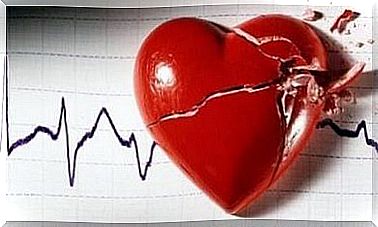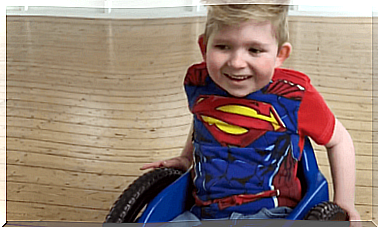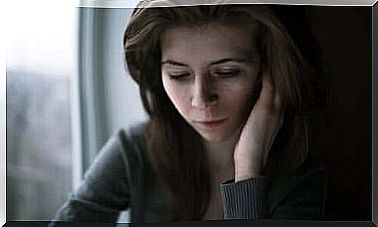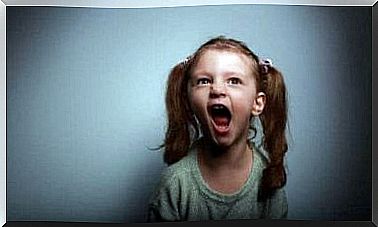Grief Therapy: How To Say “goodbye “
The loss of a loved one is extremely difficult. It will happen to all of us at some point, but not everyone has the same resources or tools to deal with this. Sometimes this process becomes a chronic, serious problem.
Researchers estimate that this type of chronic problem occurs in 10-20% of cases where a person goes through grief. For these cases, there are different techniques, supported by different studies, that can help us break out of it.
Among them we will talk about directed grief. But before we begin, we must distinguish between normal grief and pathological grief. This is our question: to what extent is it common to suffer?
Normal grief and pathological grief
Grief is a set of reactions that occur on a physical, emotional and social level. They are triggered by a significant loss; in our case the death of someone we love.
The symptoms vary in intensity and duration. In some cases, they last a lifetime. In any case, remember that it is an adaptive (good) reaction to begin with.
Grief, sadness and anxiety are the most common emotions, in that order. Fear of being alone is also common. We can also feel guilty and become disinterested in our surroundings.
These symptoms are normal, but they should go away within six months to a year.
When the emotional reactions are much more intense, they make daily life difficult. And if they last over a year, you may suffer from pathological grief.
Unusual grief symptoms such as hallucinations or suicidal thoughts occur here. Pathological grief is often complicated and can give rise to other behaviors. These include social isolation, personal neglect or substance abuse. This is when we should consider grief therapy and professional help.
Grief therapy: therapeutic strategies
Professionals use both individual and group therapy to treat pathological grief. In some cases, it is effective to use both. The treatment is about giving people tools while offering social support to end their isolation.
In any case, the main goal of grief therapy is not to forget the deceased, but to change the process of mourning so that the memory of the deceased does not create a blockage. Therefore, the basic goals of this therapy are to:
- Simplify expressions of feelings and experiences in relation to the deceased. Usually the person has not put into words what he feels or thinks. This makes it difficult to get over the loss.
- Discuss the circumstances that led to his death. Depending on the type of death that has occurred (suicide, sudden accident, terrorist attack, etc.) the grief may be more painful. Talking about it will facilitate assimilation and acceptance.
- Center the therapy to solve daily problems and readjust to normal daily life. Small, daily steps can have great results.
- Project the patient into the future, and gradually incorporate to complete activities into the routine. This will make the patient feel that, after all, some things are still good.
Directed grief
Psychologists use this type of therapy with people who experience pathological grief with avoidant behaviors, emotional blockages and nightmares or invasive thoughts.
In these cases, directed grief may work. It consists of exposing the person to memories related to the deceased, especially shared experiences.
For example, therapists have usually made their patients read old letters or look in photo albums. No matter how it is done, the point is to break the disruptive emotional inhibition.
The underlying mechanism that constitutes this type of therapy is the weakening of the conditioned emotional response (sadness) through repeated presentation of stimuli that generate that response.
That is, we repeatedly expose the patient to what generates sadness until the feeling diminishes.
Repeated exposure can also be done with behaviors that the patient used to like but stopped doing because they bring back memories of the deceased.
For example: going to the cinema, traveling, going out to dinner, etc. In these cases, the satisfaction of the activity will also serve as the underlying treatment mechanism.
Indicators of improvement after pathological grief
How do we know if grief therapy has worked? What behaviors determine recovery from pathological grief? Here is a series of indicators or signals of improvement:
- The person has regained normal biological aspects, such as appetite and sleep.
- Verbal expressions of emotion, such as smiles or hugs, reappear.
- The person has started doing nice things again, resuming his social life, and even participating in volunteer activities to help others.
- The memory of the deceased is already integrated as part of their personal history. It no longer triggers excessive negative emotions. They remember positive experiences they shared with the deceased.
- They enjoy daily life and set goals for the future.
In short, grief is a common process that requires personal growth and is not always easy to work through. Regardless, knowing what pathological grief is, and some ways to treat it, can help us identify and deal with the last goodbye. Furthermore, it can help motivate us to seek professional help when we need it.









